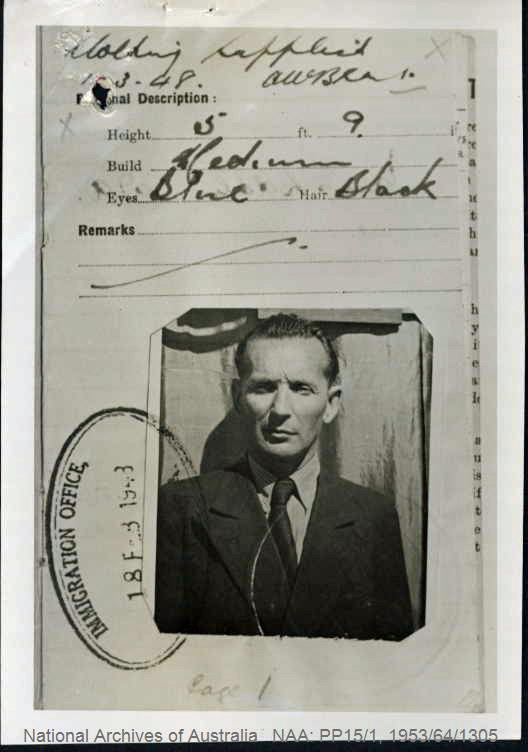The Dictionary of Sydney was archived in 2021.
The Dictionary of Sydney was archived in 2021.
The Hermits of Killarney Heights
 Portrait photo of Stefan Pietroszys attached to Australian Immigration file 1947, National Archives of Australia (PP15/1 1953/64/1305)
Portrait photo of Stefan Pietroszys attached to Australian Immigration file 1947, National Archives of Australia (PP15/1 1953/64/1305)
 Portrait photo of Genovefa Pietroszys attached to Australian Immigration file 1947, National Archives of Australia (PP15/1 1953/64/1306)
Portrait photo of Genovefa Pietroszys attached to Australian Immigration file 1947, National Archives of Australia (PP15/1 1953/64/1306)

Categories
Blog
2SER Breakfast
cave-dwellers
Eastern Europe
Genovefa Pietroszys
hermits
Killarney Heights
Lithuania
Minna Muhlen Schulte
refugees
Stefan Pietroszys
sydney history
Wilamina Russo
World War II
WWII



